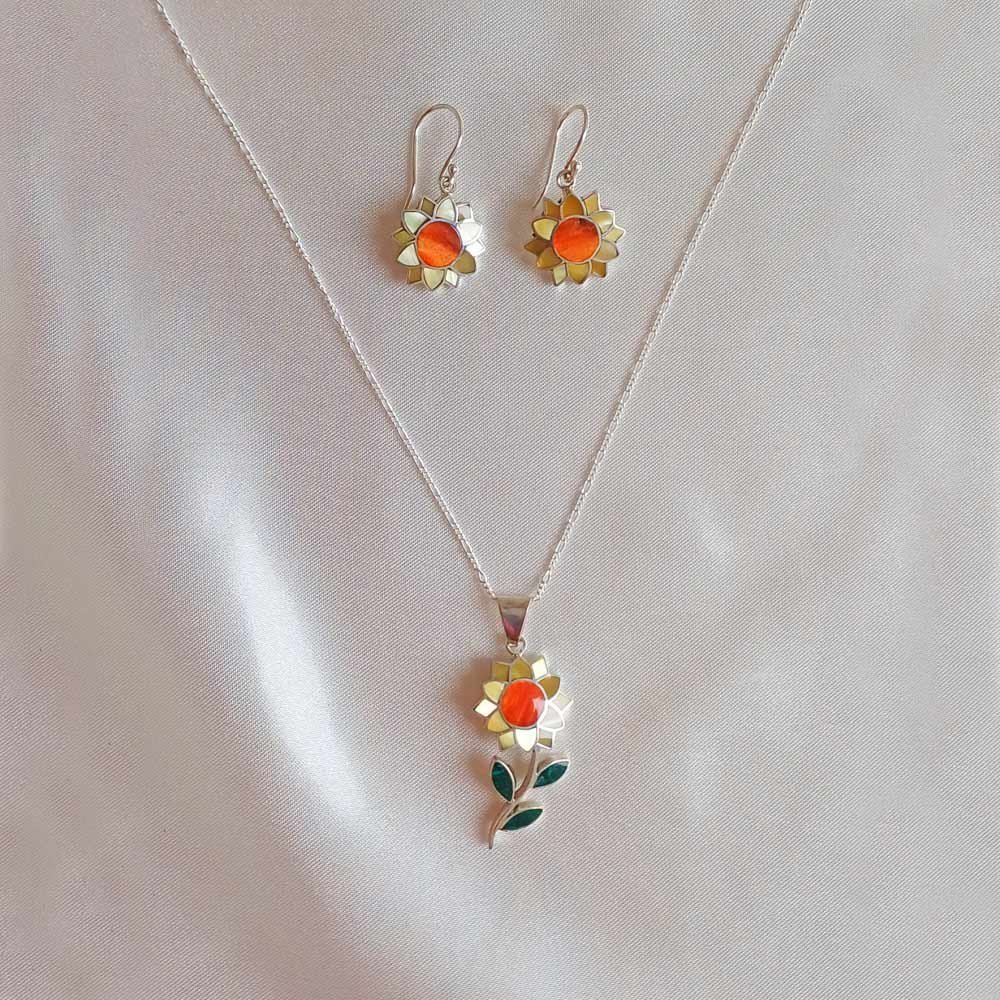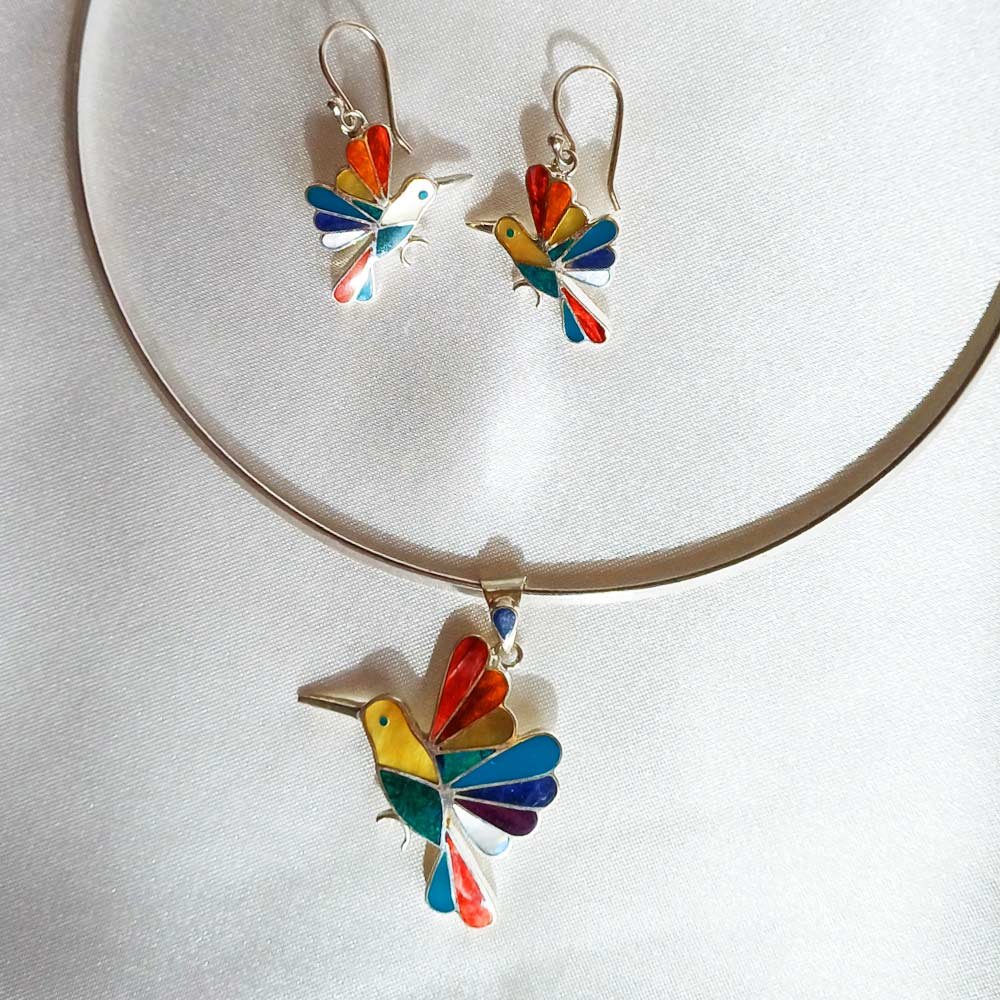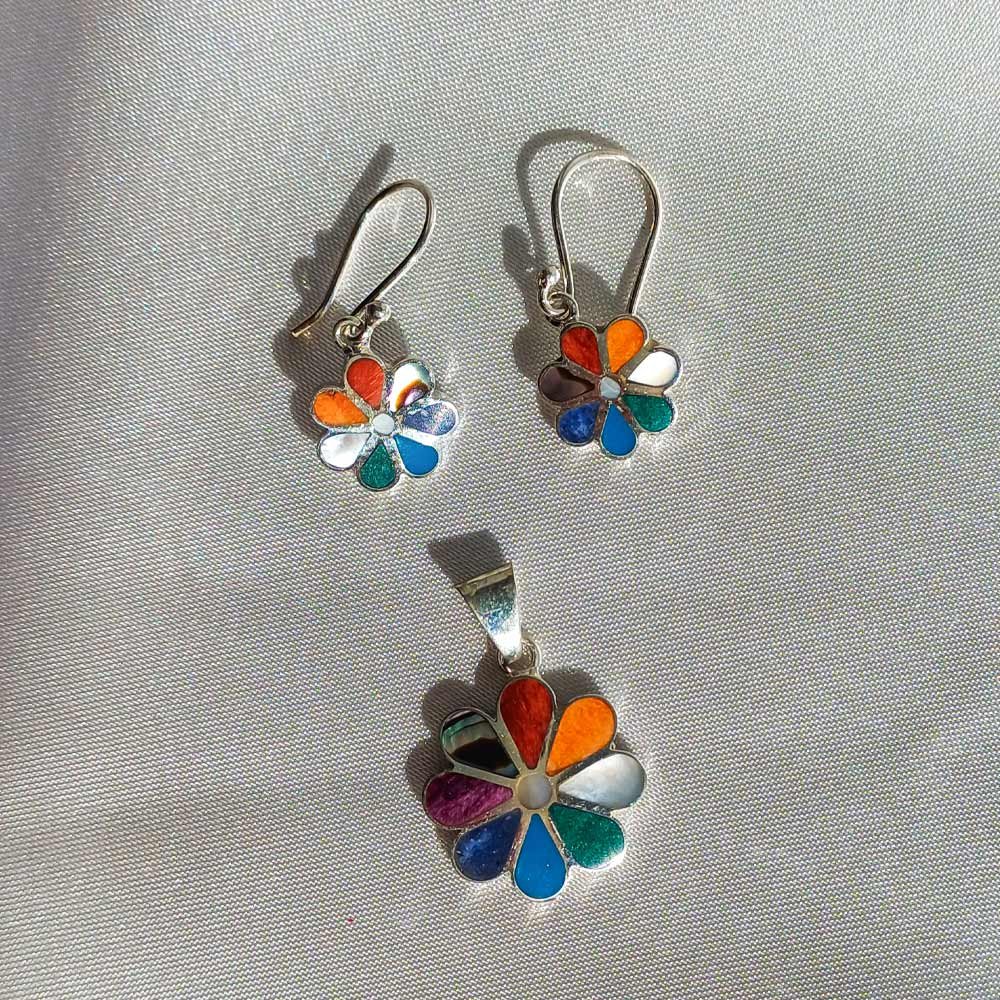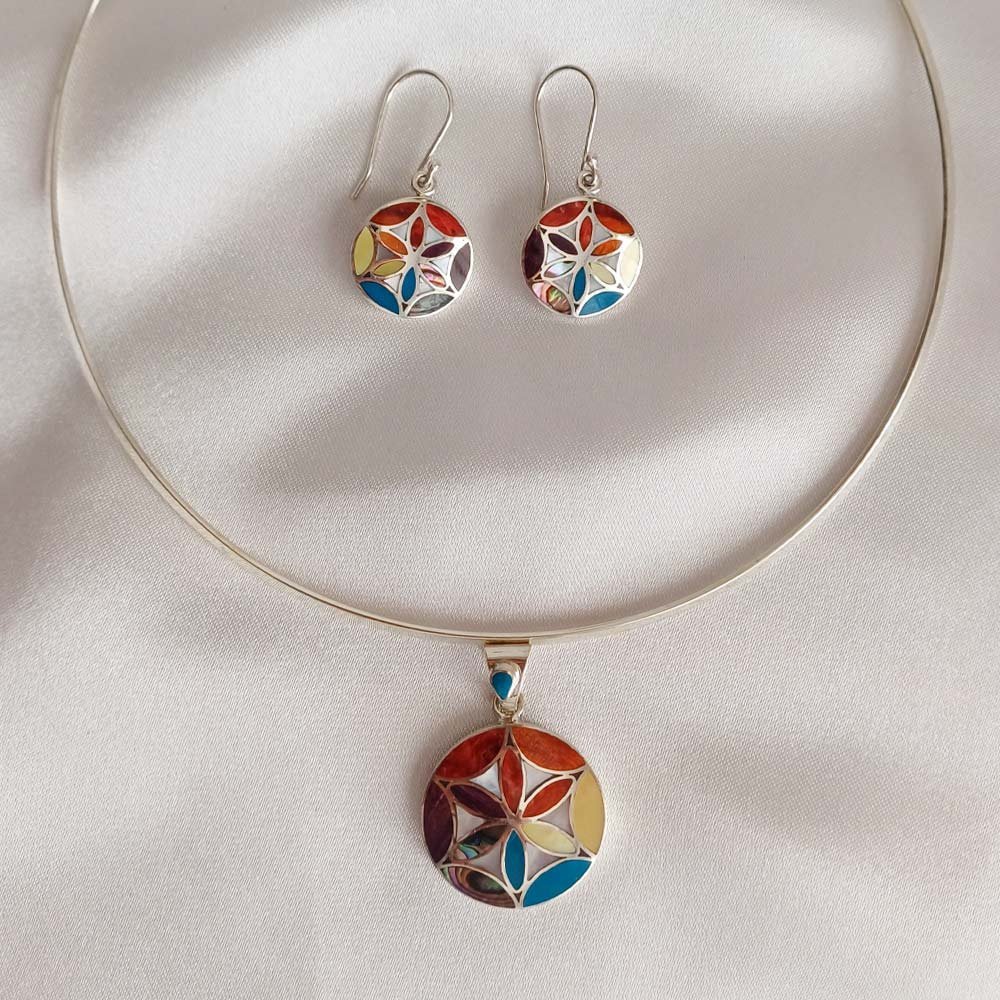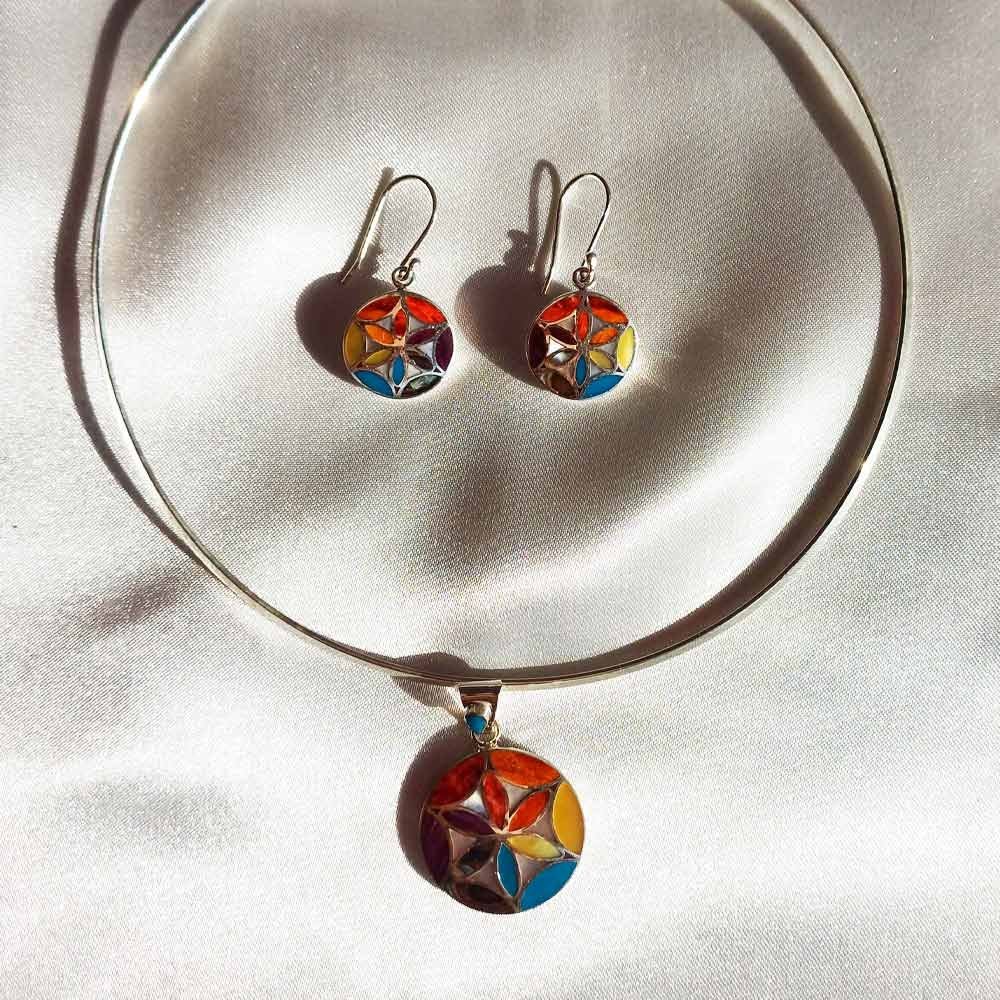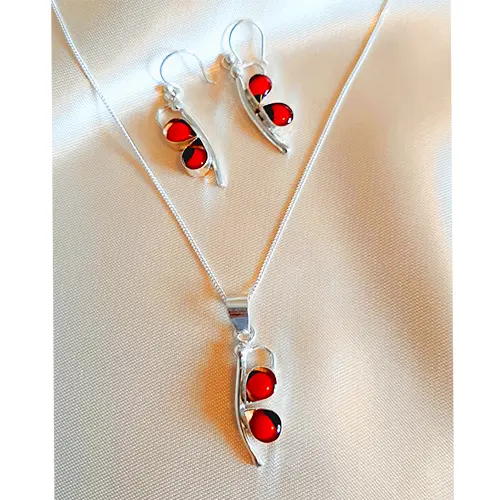handgemaakt
Showing 1–12 of 21 resultsSorted by popularity
Zonnebloem Van Gogh Set van hanger met oorbellen
Van Gogh’s sunflower paintings symbolized gratitude and were significant to him. He displayed them in Paul Gauguin’s room, impressing Gauguin with their uniqueness. Van Gogh later created copies, and one is now housed in the Van Gogh Museum.
Hummingbird Chrysocolla Rainbow Set of pendant and earrings
Inca culture viewed the hummingbird as a celestial messenger, while the condor was the primary spiritual messenger from the upper world. The hummingbird was significant for advancing human consciousness.
Inca Calendar Hoops Set of pendant and earrings
The Inca calendar, tailored to the Cuzco Valley environment and culture, served as the basis for governing the Inca Empire. It featured 12 synodic months, calculated from one new moon to the next.
Butterfly Rainbow Set of pendant and earrings
Butterflies are beautiful and have mystery, symbolism and meaning and are a metaphor that represents spiritual rebirth, transformation, change, hope and life.
Tulipan Espondylus Purple Set of pendant and earrings
Tulips are widely associated with the meaning of perfect and deep love, making them a classic symbol of affection for partners, children, parents, or siblings.
Mandala Rainbow Set of pendant and earrings
A mandala symbolizes the ideal universe and its creation represents a shift from suffering to joy. It serves as a meditation aid, guiding the meditator toward self-improvement.
Turtles Rainbow Set of pendant and earrings
The turtle is a symbol of spiritual rebirth and transformation in various cultures. Its ability to go underwater and resurface represents renewal and spiritual protection.
Inca Calendar Nacre & Turquoise Hoops Set of pendant and earrings
The Inca calendar, tailored to the Cuzco Valley environment and culture, served as the basis for governing the Inca Empire. It featured 12 synodic months, calculated from one new moon to the next.
Khipu Rainbow Chakra Harmony Set of pendant and earrings
The Quipu, or khipu, was used by the Incas and Andean cultures to record and convey information. This ingenious device, without a written language, utilized colors, strings, and knots at different heights to record various data, including dates, statistics, accounts, and even abstract folk stories and poetry.
Owl Mother Pearl Set of pendant and earrings
Among the Moche, the owl, known for its nocturnal skills, is depicted in ceramics and metal. It aids shamans in their supernatural journeys and symbolizes sacred power, connecting specific individuals to the divine world.





